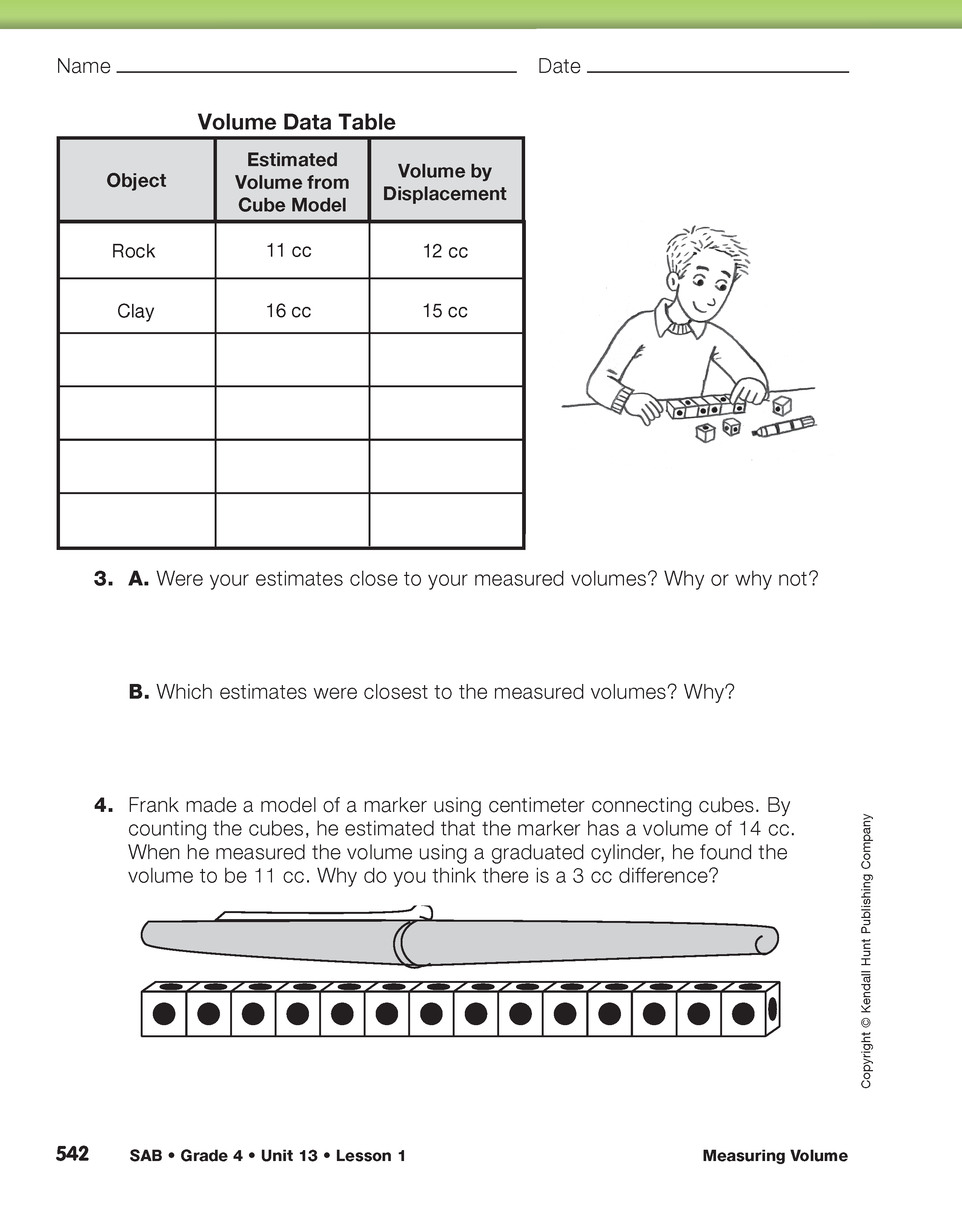Measuring Volume
Est. Class Sessions: 1–2Summarizing the Lesson
Discuss Questions 3 and 4 in the Student Activity Book.
For Question 3, students' estimates will be close if their models made of connecting cubes closely resemble the actual object. Some objects may be difficult to model with the cubes, such as objects with curved sides or objects that are thinner than a centimeter. For these objects, students can refine their estimates by deleting a cubic centimeter or two to account for the differences in the models and the actual objects.
For Question 4, Frank's estimate from his model of a marker is different from his measured volume with the graduated cylinder. Students should see that the marker is slightly thinner than 1 cm and that it tapers off at each end. Frank may have also made an error in his measurement.
After discussing Questions 3–4 ask:












